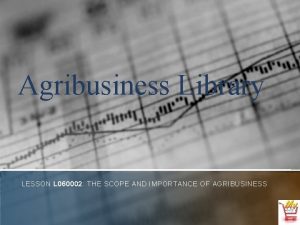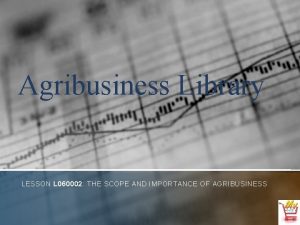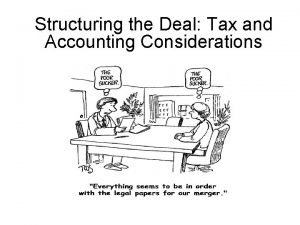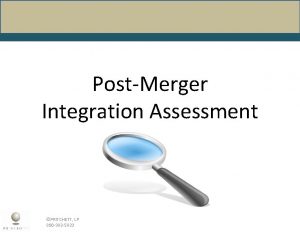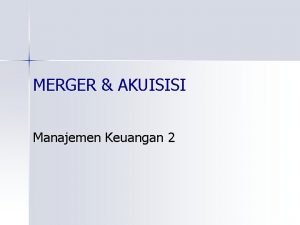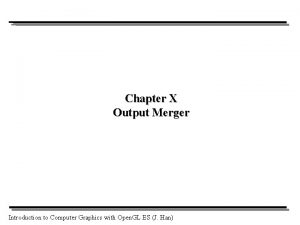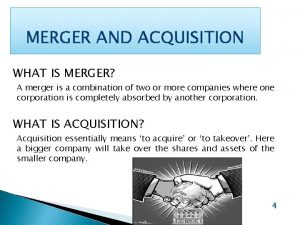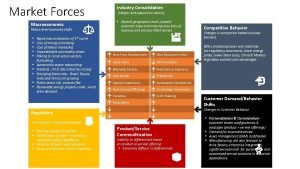The Economic Impact of Merger Control What is


























- Slides: 26

The Economic Impact of Merger Control: What is Special About Banking? Elena Carletti Center for Financial Studies & Wharton FIC Philipp Hartmann European Central Bank & CEPR Steven Ongena Cent. ER – Tilburg University, TILEC & CEPR Disclaimer: Any views expressed are only the authors’ opinions and should not be regarded as official views of the ECB or the Eurosystem. 1

This Paper • Studies impact of strengthening of competition policy – On financial and non-financial firms (“banks and firms”) – Using investors’ assessments / accounting measures • Why interesting? – Supervision of banking sector – Competition – stability trade-off? 2

What We Find? • Strengthening of competition control of M&As: – Positive bank excess stock returns – Negative firm excess stock returns • After implementation: – Target banks become larger and more profitable – No changes in firm performance 3

Why? • Banks‘ stock returns are higher if – Supervisory control of M&As was “opaque” • Competition control of M&As exerts positive “externality” in banking? – Reduces potential discretion of the supervisory focus on “soundness and prudence”? 4

Talk • Background and data • Event study • Exogeneity of events • Dating • Methodology • Results • Excess stock returns of firms / banks • Changes in financial accounting measures • Explanation of individual bank stock returns • Tentative interpretation and conclusion 5

Competition Control of M&As • Relatively recent phenomenon – except for US (1890 and 1914) and Germany (1958) • Most industrial countries introduced it in 1990 s or later • General control applying to all (most) sectors – Prevent excessive market power and lessening of competition – Market-oriented control, efficiency driven • A few exceptions in the application to the banking sector • “Natural” experiment to study differential effects 6

Data and Institutional Variables • Unique data set of institutional design of merger control – Multiple sources: legal texts, reports, interviews with financial country lawyers of national authorities and ECB • 18 (industrial) countries plus European Union • Time period: January 1987 – July 2004 • Changes in key dimensions constitute our events: • • Competition criteria Competition enforcer Competition overturning Mandatory notification 7

8

Talk • Background and data • Event study • Exogeneity of events • Dating • Methodology • Results • Excess stock returns of firms / banks • Explanation of individual bank stock returns • Tentative conclusion and interpretation 9

Exogeneity of Events Introduction of changes in competition control across all sectors We study: • Effects on banking sector and • Differential effects on banking / other sectors We Check: • Difference low vs high bank credit / gdp countries 10

“Dating is key!” (Binder, RAND JE 1985) 11

Methodology: Cumulative Abnormal Returns t : day when domestic market is open 0 : event (or implementation) day – 250 – + 250 + : estimation window t : event windows: 2, 10, 20, 40, 60, 120 days rjt : bank stock or non-financial (firm) index return, country j rmt : : domestic (world) market index return jtb = 1 during period before event [- , 0] = 0 otherwise jta = 1 during period after event [+1 , ] = 0 otherwise ja, b : cumulative abnormal returns (CARs) Test if the average of the bank and firm CARs across events equals zero 12 Test if the difference between the bank and firm CARs across events equals zero

Event Study • Exogeneity of events • Earliest possible date in the legislative process • Standard methodology • Events are either introduction or strengthening – More competition oriented • Introduction/strengthening of competition control – prevents market power, reduces future monopoly profits – hence should deflate stock prices? 13

Talk • Background and data • Event study • Exogeneity of events • Dating • Methodology • Results • Excess stock returns of firms / banks • Explanation of individual bank stock returns • Tentative conclusion and interpretation 14

Event Study Results 15

Event Study Results Banks positively and firms negatively affected 16

Robustness • Different dating (Approval, Decision, Publication Dates) • Market Indices – Country and European – World – Other Combinations: World Bank, World Firm, … • Estimation Windows • Tests for independence of the events • Individual Banks’ stock returns 17

Two Cases I • France, May 16 th, 2003: – Credit Agricole – Credit Lyonnais – Weakening Competition Control by Court Decision 18

Two Cases II • Italy, 2005 – ABN Amro-BPI-Antonveneta case 08. 02. 2005: Mc. Creevy warns Fazio not to block foreign bank takeovers 19

Did M&As Change Upon Implementation? • Data: – Complement SDC with records from antitrust and supervisory authorities • Bank M&A sample increased by > 10% • Study M&A activity 1, 2, and 4 years before and after implementation of legislative changes • Main finding: Target banks’ size and profits increase – Surprising again for banks, as merger control should rather reduce merger size 20

Findings So Far • Event study around legislative changes – CARs for banks: positive – CARs for firms: negative • M&A characteristics – Target banks’ size and profits increase Þ How can we explain this? 21

Supervisors’ Role in Bank Merger Review • Banks are also subject to special supervisory reviews of M&As (e. g, Basel Core Principles) • Existed before the introduction of competition control • The aim is to preserve a stable system – E. g. , “Sound and prudent management” test, capitalization • But, stability concerns may lead supervisors to – Promote inefficient M&As (to save bankrupt institutions) – Block proposed M&As (avoid disruption) • Typically opaque process, open to potential discretion 22

Explaining the Positive CARs of Banks • Linking individual CARS to • 4 variables describing supervisory control: – – Supervisory Enforcer Supervisory Focus Supervisory Formal Decisions Not Public Supervisory Informal Notification • Control and interaction variables – Competition policy aspects: Antitrust Enforcer, Efficiency Defense, National Markets*C 3, etc. – Others: Bank Size (log assets), income measures, non-performing loans • Notice: we do not study CARs of the banks involved in M&As but of all the banks around the strengthening of competition policy 23

24

Tentative Conclusions 1. Introduction/strengthening of competition control of M&As: • • Positive excess bank stock returns Negative excess firm stock returns 2. 3. Bank M&A size / profitability increases upon implementation Bank stock returns increase more when supervisory formal decisions are not public • • Supervisory reviews of bank mergers play an important role? Strengthening focus on competition has positive externality in banking? 25

Tentative Interpretation • Results contradict “conventional wisdom” that competition is bad in banking • …and supports recent strengthening of competition control, competition authorities and transparency of review process also in banking (e. g. , Italy, France, Portugal) • …suggestive of the optimal allocation of policy responsibilities between competition and supervisory authorities • One important caveat: this is not a welfare analysis! 26
 Positive impact of economic in tourism
Positive impact of economic in tourism Pax romana technology
Pax romana technology Scope of agribusiness
Scope of agribusiness Output sector in agribusiness
Output sector in agribusiness What is the scope and economic impact of agribusiness
What is the scope and economic impact of agribusiness Scope of agribusiness
Scope of agribusiness Social impact of the pax romana
Social impact of the pax romana Economic growth vs economic development
Economic growth vs economic development Economic growth and development
Economic growth and development Economics unit 1 lesson 2 difficult choices
Economics unit 1 lesson 2 difficult choices Reasons for singapore merger with malaysia
Reasons for singapore merger with malaysia Pin-pen merger map
Pin-pen merger map West sussex ccg merger
West sussex ccg merger Deal structuring process
Deal structuring process Pritchett lp
Pritchett lp Post merger integration course
Post merger integration course Types of mergers
Types of mergers Hp bought compaq
Hp bought compaq Example of a vertical merger
Example of a vertical merger Latar belakang penggabungan usaha
Latar belakang penggabungan usaha What is mergers and acquisitions
What is mergers and acquisitions Reverse triangular merger
Reverse triangular merger Daimler-chrysler merger analysis
Daimler-chrysler merger analysis Xoutput
Xoutput What is merger and consolidation
What is merger and consolidation Centurylink qwest merger
Centurylink qwest merger Amazon and whole foods merger case study
Amazon and whole foods merger case study



